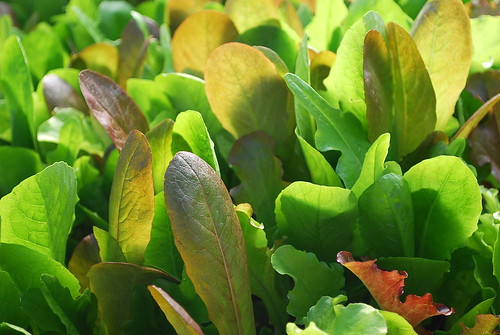
Hello everyone, I just uploaded my third piece for Simple, Green, Frugal Co-op. My post this week highlights five fall vegetables that I grew this year - most of which will sound very familiar to those of you who regularly read this blog. If you have the time or the inclination, you can read about it here.
As always, thanks for the support. I can't tell you how much I've learned from all of you!
"Five Fall Crops Worth Mentioning"- as posted on Simple, Green, Frugal Co-op on September 27, 2009
Posted by Thomas, from A Growing Tradition
When our family moved to our new home in late July, I was a bit disappointed that we had missed out on being able to grow many of the traditional summer crops that seem to dominate seed catalogs these days. While other gardeners were tending to their tomato, cucumber and melon plants, I was breaking ground, raising fence and sowing my fall garden. Looking back, I was glad for the experience. Here in New England, many of us are so focused on getting our summer crops to mature in September (and rightly so) that we often overlook the extended bounty that a traditional fall garden can produce. I experimented with many different types of fall crops this year. And while I've had my fair share of failures along the way, I've learned that all of the planning and effort that goes into growing a proper fall garden is well worth it.
There are many things I look for in a good fall vegetable - quick maturity dates and cold hardiness to name a couple. Instead of listing them all, I thought I'd highlight five crops that I believe exemplify many of these characteristics. In no particular order:
1. The Obvious - Cut and Come Again Lettuce
30 Days to harvest - Fall lettuce/salad mix is the ideal gift that keeps on giving. I can appreciate a crop that will allow me to harvest from it over and over again until a mighty November frost intervenes (longer if you give it some protection). Cooler weather offers two added benefits - 1) you don't have to worry about your lettuce bolting unexpectedly and 2) certain greens (such as arugula) that would normally be too sharp for my taste during the summer months develop a milder flavor. Finally, I consider a fall harvest of salad greens to be the perfect break between the succulent vine-ripened crops of summer and the hardier root vegetables of winter.
2. The Esteemed - Hakurei Turnips
40 days to harvest - I cannot speak highly enough about this vegetable. Those of you who dislike conventional turnips might appreciate this mild and crisp variety from Japan. Prized by top chefs around the world, Hakurei turnips can be enjoyed raw in a salad or lightly cooked. When steamed and tossed with a bit of butter, these turnips taste like the best cauliflower I have ever had (but much easier and faster to grow). Hakurei turnips are best harvested golf ball-sized and produce tasty greens as well. Sow seeds every couple of weeks from mid-August to mid-September to ensure a steady crop throughout most of the fall.
3. The Humble - Radishes
30 days to harvest - I will admit that radishes are not high on my list of favorite things to eat. However, what they lack in taste, they more than make up for in color, which can range anywhere from brilliant to radiant. This humble vegetable grows easily in cool weather and small-type varieties are very quick to mature. Harvest small-type radishes young as they tend to get hot and pithy the larger they get. I enjoy them raw in a salad or pickled.
4. The Tender and Sweet - Chinese Broccoli
45-50 days to harvest - Most Asian greens thrive in cooler weather, and out of these, many are exceptionally cold hardy. The disadvantage of growing Asian greens is that most are susceptible to the same pests that plague other brassicas. Therefore, protection in the form of row covers is generally needed. The advantage is that they usually have relatively short maturity dates. One variety that performed very well for me this year was a flowering-type brassica known as Green Lance, more commonly referred to as Chinese broccoli. The stalk, leaves and flower buds of this plant are all edible. In particular, the stalk (like asparagus) is very tender and sweet. I will continue to grow this vegetable in place of fall broccoli as it is faster to mature, more productive, and in my experience, much less vulnerable to pests.
5. The Nutritional Powerhouse - Spinach
40 days to harvest - There are several varieties of spinach that are exceptionally winter hardy. While other fall greens slowly succumb to frost, spinach will remain surprisingly resilient with a bit of added protection in the form of a cold frame or row covers. The variety that I am growing currently is called "Space". Spinach, like lettuce and most Asian greens, can be harvested during most stages of development, making them a particularly reliable fall crop regardless of how quickly the weather turns cold. And if that is not enough to make you want to grow spinach, its nutritional value should.
I hope you consider growing some of these vegetables in your fall garden. One final peace of advice - please bear in mind that precise sowing dates are much more crucial when planning a fall garden (sow too late and you will end up eating mostly baby greens). You can mitigate this somewhat by utilizing row covers. To be on the safe side, add a couple of weeks to the maturity date listed on the seed packet to help ensure a harvest. If you have any fall crops you particularly love that I have not mentioned here, or have any fall gardening tips that you would like others to know, please share!
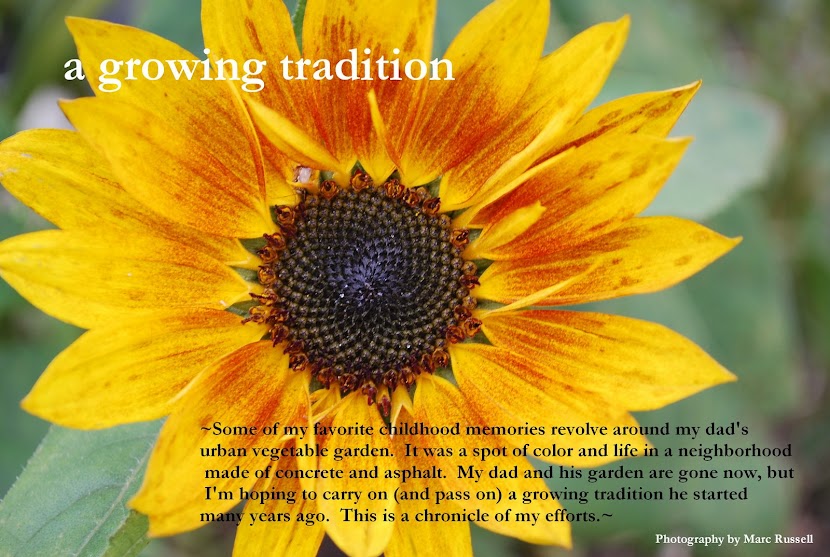


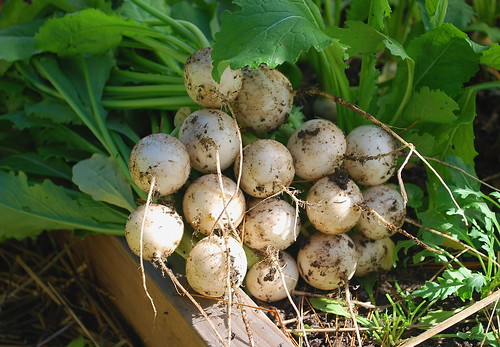
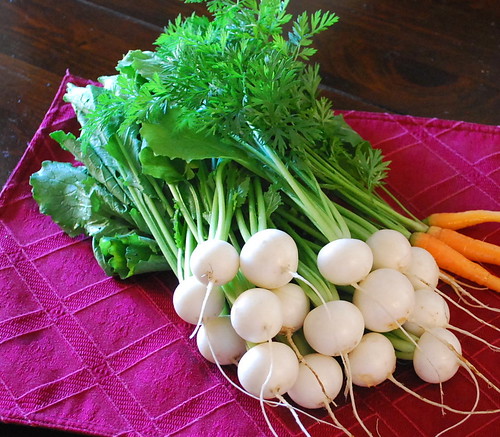

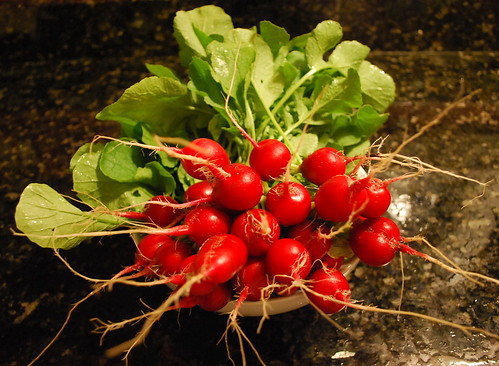









What a nice picture. I definitely will try some of these next year.
ReplyDeleteMari Anne - thanks! I hope you do!
ReplyDeleteVery nice srticle, Thomas! I might try the Hakurei turnips next year. I learned something interesting at the Farmer's Market last week. Somebody had big gorgeous daikon radishes. She said that in addition to being tasty (less peppery than regular radishes) and adaptable to all sorts of preparation, they help improve soil...they apparently are quite strong and help bust up clods of clay. A no till way to improve tilth. (Although it looks like you're blessed with dark loam there, not our Virginia red clay,)
ReplyDelete